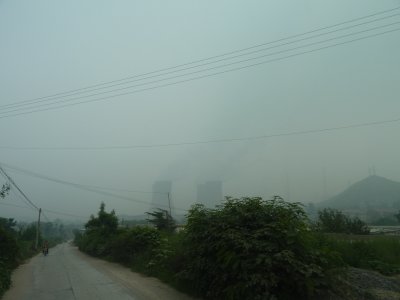
We are beginning to find the smog a bit oppressive. Apart from being a bit clearer after some rain its ever present. A feeling that there are things to be seen which can't be.
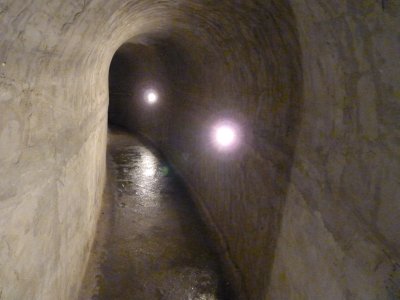
Its a fine example of "Tunnel Warfare". A resistance army response to the Japanese invasion.
The Japanese didn't get much further than this village.
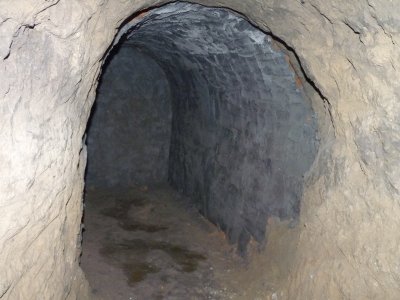
This is just a small room. We did find our way into a "turret" with holes for our rifles. Unphotographable from inside.
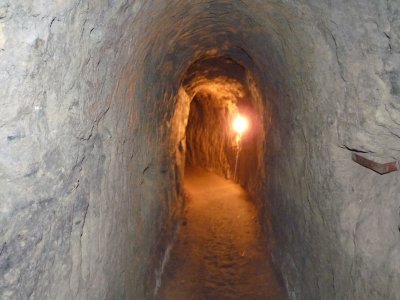
There was a museum at one of the entrances, some signs in English, but only arrows in the tunnels.
There were about 16 km of tunnels but we popped up after only a couple of km.
One of the exits we later saw was in the middle of someone's bed.
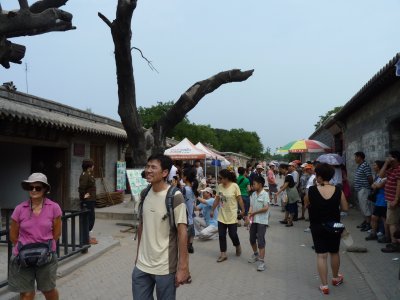
Lots of people, souvenir sales (of plastic AK47s etc) and a couple of private museums.
One guy dressed in the uniform of the time spent a lot of time explaining he was the son of one of the soldiers that built the tunnels and had his photograph taken with lots of important people and for the sum of RMB 10 we could take his photo also.
We politely declined and he moved on to the next victims.
Further down the street we could also hire WWII Chinese Army uniform bits and pieces and have our photo taken in front of field guns.
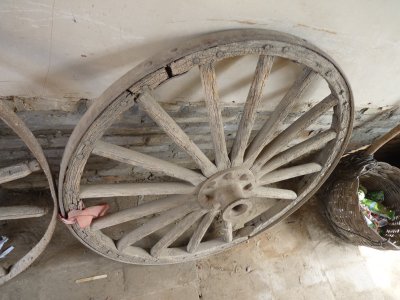
With a continuous band of iron for a tyre.
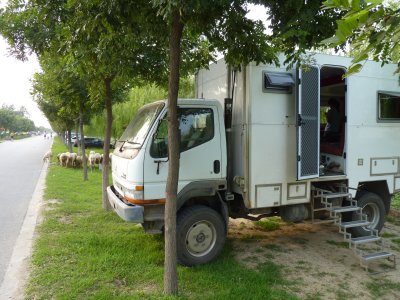
The restaurant is almost opposite. They were happy for us to park. A dry river bed behind us.
The sheep were an optional extra and tidied up the grass for us.
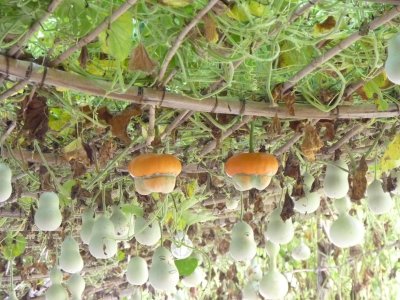
It all looked like it would collapse under the weight, but hopefully not until after we'd eaten.
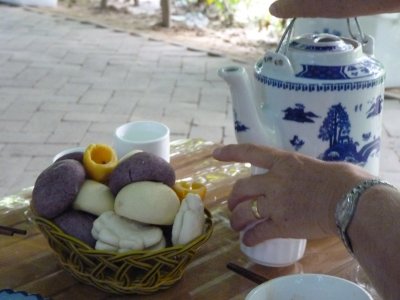
Dry bread.